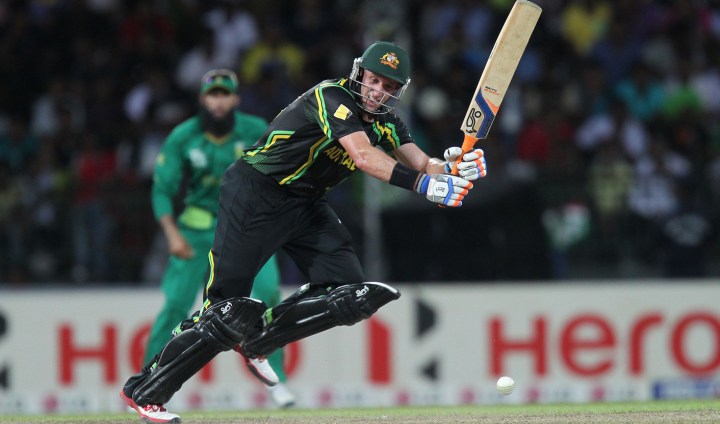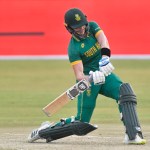Sport
South Africa’s Tri-Series quest: Find bowling perfection

South Africa will face Australia in the first of many one-day games to come their way over the next few weeks. While the team itself might be hot and bothered, the format itself still struggles to remain relevant. By ANTOINETTE MULLER.
No matter how you try to spin it, outside of the World Cup, one-day cricket has very little context. In fact, results have zero context, but that does not mean the greater picture should be ignored. The one-day format of the game continues to be the troublesome middle child who just doesn’t get enough attention and so it is sure to rebel at some stage. For now, though, it remains firmly in check and with a World Cup coming up next year, the focus is firmly on execution rather than results.
South Africa, Australia and Zimbabwe are about to get knee-deep into a tri-series in Harare. It’s all part of South Africa’s six-month preparation plan, which also includes a visit to Australia and a home series against the West Indies. The domestic one-day competition has also been structured to fit in around the final squad selection, so there is plenty of time to fine-tune and tweak whatever might be missing.
For South Africa, in this series, the biggest challenge is around the bowling unit. With Vernon Philander and Beuran Hendricks both out injured, South Africa’s bowling line-up will have to rejig. They just beat Zimbabwe 3-0 with at their second string attack, but Dale Steyn and Morne Morkel are back for this outing. The third spot is up for grabs, open to either Kyle Abbott or Mthokozisi Shezi after Marchant de Lange missed out on a spot in the side. De Lange, who just recently returned from a long injury layoff, was perhaps unlucky to be excluded. However, it’s precaution rather than anything else. Because he is so prone to injury, easing him back into competitive cricket is a priority. In his one and only match against Zimbabwe, De Lange bowled with pace, often hitting the 150km/h mark, so there is plenty to work with in depth for South Africa.
The most likely candidate to replace Philander, though, is Abbott. His pace, control and the occasional swing makes him the ideal bowler for all conditions. He’s a handy support act for the likes of Steyn and Morkel and can both hold down an end if the spinners start to slip up, but also attack when needs be. This is hardly a trial for Abbott,; it should rather be seen as a dress rehearsal, and his place for the World Cup is looking all but certain.
One of the biggest challenges for the bowlers will be taming Glenn Maxwell. Maxwell’s sheer disregard for convention – and his “close your eyes and slog” approach – earned him 93 off 46 against Zimbabwe on Monday. Not one for bother with singles or dot balls, Maxwell can be brutally destructive because he is so completely careless. South Africa’s bowlers have seen him in a two T20s before, and he came second both times, not even managing to get into the 20s. His high-risk approach is something the likes of Steyn and Morkel will easily exploit, but less experienced bowlers might struggle against him.
Before South Africa can even get stuck into Maxwell, though, there is also Aaron Finch to contend with: a batsman as destructive as David Warner, with just a pinch more elegance. Since Zimbabwe’s batsmen hardly put up a fight, this will be a far sterner test for South Africa’s pace attack. Since the wickets are still slow and low, the challenge of finding plan B and plan C is something AB de Villiers will have to help his bowlers with.
From a batting perspective, South Africa are fairly settled. Hashim Amla and Quinton de Kock have a seemingly evergreen partnership at the top of the order while Faf du Plessis offers stability lower down. AB de Villiers hasn’t performed up to his usual standards, but that is surely nothing more than a blip. David Miller is showing signs of fulfilling his promise and JP Duminy continues to evolve as an all-rounder while making quick lower order runs his niche. The team has all the right ingredients to make for a volatile cook-off, but the one-day format continues to leave one cold.
In recent years, the one-day format has often taken a backseat to Tests and T20s. While the Champions Trophy of 2013 sparked something of a renaissance for the format, it has struggled to remain relevant when played as part of a tour. Building up to the World Cup, series and their results will hold some water, but after that tournament, it might be time for some introspection for the format. For now, it’s all systems go as teams go in search of the perfect formula for silverware. DM
Photo: Australian batsman Mike Hussey plays a shot during the Super Eight stage match of the World Twenty20 tournament between South Africa and Australia at Colombo, Sri Lanka on 30 September 2012. EPA/HARISH TYAGI



















 Become an Insider
Become an Insider